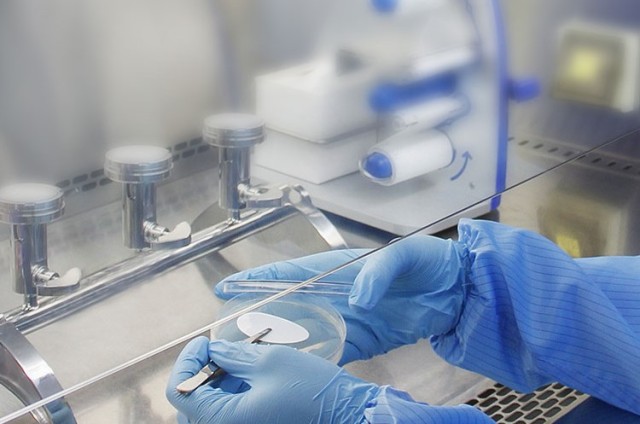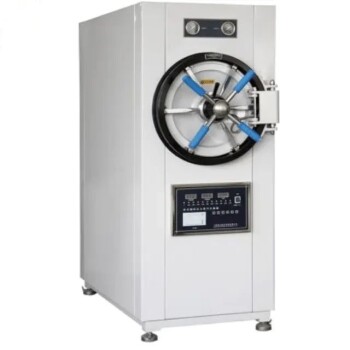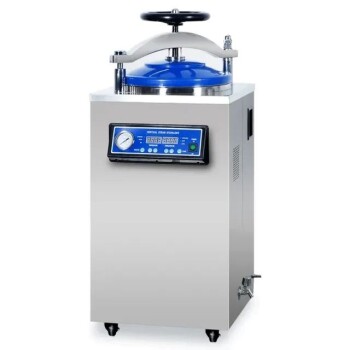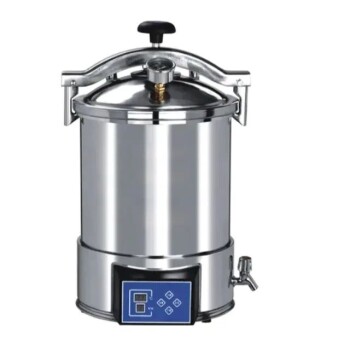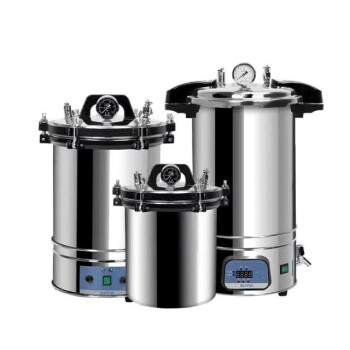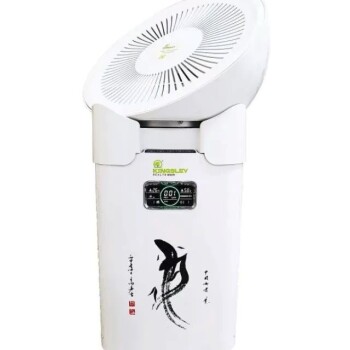Cleaning Equipment
Ultrasonic Cleaning Machine
The ultrasonic cleaning machine operates by harnessing the power of high-frequency mechanical oscillations, which generate microscopic bubbles within the cleaning solution. These bubbles, known as cavitation bubbles, form and collapse rapidly, creating shock waves that penetrate the surface of the objects being cleaned. This process effectively dislodges and breaks down dirt, grime, and even stubborn oil residues, transforming them into smaller particles that can be easily emulsified and removed from the surface.

Ultrasonic cleaning is particularly effective for intricate parts and surfaces that are difficult to clean using traditional methods. The high-frequency vibrations ensure that the cleaning action reaches every nook and cranny, making it ideal for laboratory equipment that requires thorough and precise cleaning. Additionally, the process is environmentally friendly as it often uses less water and fewer chemicals compared to conventional cleaning methods.
| Feature | Description |
|---|---|
| High-Frequency Oscillation | Generates microscopic bubbles that create shock waves for effective cleaning. |
| Cavitation Bubbles | Rapidly form and collapse, dislodging dirt and oil. |
| Intricate Cleaning | Ideal for hard-to-reach areas on laboratory equipment. |
| Environmentally Friendly | Uses less water and fewer chemicals compared to traditional methods. |
The ultrasonic cleaning machine is a versatile tool in the laboratory, ensuring that all equipment is thoroughly cleaned and ready for use, thereby maintaining the integrity and accuracy of experiments and procedures.
Humidity Control
Dehumidifier
Dehumidifiers play a crucial role in maintaining optimal humidity levels within the laboratory environment. These devices operate by drawing in humid air, which is then passed over cold coils. As the air cools, the water vapor condenses into droplets, which are collected in a reservoir or drained out through a hose. The now-dry air is reheated and released back into the room, effectively reducing the ambient humidity.

This process not only helps in preventing the growth of mold and mildew but also ensures that sensitive equipment and materials are kept in conditions that are less conducive to corrosion and degradation. By maintaining a stable humidity level, dehumidifiers contribute significantly to the overall integrity and longevity of laboratory instruments and samples.
In addition to their primary function of moisture removal, modern dehumidifiers often come equipped with advanced features such as humidity sensors and programmable controls, allowing for precise and automated regulation of the environment. These features are particularly beneficial in research settings where consistent conditions are essential for accurate and reproducible results.
Air Quality Management
Air Purifier
The air purifier plays a crucial role in maintaining the quality of air within a laboratory environment. It operates by continuously circulating the air through a sophisticated filtration system. This system is designed to capture and neutralize a wide range of pollutants, including particulate matter, volatile organic compounds (VOCs), and microbial contaminants.

The filtration process typically involves multiple stages, each targeting different types of pollutants. For instance, a high-efficiency particulate air (HEPA) filter is often used to trap particles as small as 0.3 microns, while activated carbon filters are employed to adsorb gaseous pollutants. Additionally, some air purifiers incorporate UV-C light technology to inactivate microorganisms like bacteria and viruses.
By adsorbing and decomposing these pollutants, the air purifier ensures that the air within the laboratory is not only clean but also free from harmful contaminants. This is particularly important in environments where precision and cleanliness are paramount, such as in scientific research and medical settings.
Moreover, the efficiency of an air purifier can be enhanced by integrating it with other air quality management systems, such as HVAC units, to ensure a comprehensive approach to air purification. This holistic approach ensures that the air quality in the laboratory remains optimal, supporting the integrity of experiments and the health of personnel.
Sterilization and Disinfection
Autoclave
The autoclave is a vital tool in laboratories and medical facilities, designed to sterilize equipment and supplies by subjecting them to pressurized saturated steam. This method ensures the complete elimination of microorganisms, including bacteria and viruses, which are otherwise resilient to conventional cleaning methods. The process typically involves heating the contents to 121 °C (250 °F) for 30 to 60 minutes under a pressure of 15 psi (205 kPa or 2.02 atm) above atmospheric pressure. This elevated temperature and pressure combination is crucial for penetrating materials, such as fabrics and porous surfaces, ensuring thorough sterilization.

Autoclaves are not limited to medical applications; they also play a significant role in the chemical industry for processes like curing coatings and vulcanizing rubber. Industrial autoclaves are essential in manufacturing composites, where precise control over temperature and pressure is necessary to achieve the desired material properties. The invention of the autoclave by Charles Chamberland in 1879 marked a significant advancement in sterilization technology, building upon the earlier work of Denis Papin, who created the steam digester in 1679.
The term "autoclave" itself is derived from Greek and Latin roots, translating to "self-locking device," reflecting its design as a sealed chamber that maintains internal conditions independently. This self-contained operation ensures that the sterilization process is consistent and reliable, making autoclaves an indispensable piece of equipment in environments where sterility is paramount.
Drying Sterilizer
The drying sterilizer is an essential piece of equipment in the laboratory, designed to ensure that all instruments and tools are thoroughly dried and sterilized before use. Unlike other sterilization methods that might leave equipment wet or damp, the drying sterilizer incorporates a sophisticated temperature control system. This system meticulously maintains the equipment within a precise temperature range, typically between 70°C and 180°C, ensuring complete evaporation of any residual moisture.

By maintaining a controlled environment, the drying sterilizer not only prevents the growth of mold and bacteria but also ensures that the equipment remains in optimal condition for extended periods. This is particularly crucial in sensitive laboratory settings where even the slightest contamination can lead to erroneous results or compromised experiments.
Moreover, the drying sterilizer often includes advanced features such as automated timers and programmable settings, allowing lab personnel to customize the drying and sterilization process according to specific needs. These features enhance efficiency and reduce the risk of human error, making the drying sterilizer an indispensable tool in maintaining a sterile and functional laboratory environment.
Hydrogen Peroxide Sterilizer
Hydrogen peroxide sterilizers are advanced disinfection systems that utilize hydrogen peroxide plasma to effectively inactivate a broad spectrum of microorganisms on medical equipment and instruments. Unlike traditional sterilization methods, which often rely on heat or chemicals, hydrogen peroxide sterilizers offer a more versatile and efficient solution.

The process begins with the vaporization of hydrogen peroxide, which is then converted into plasma through the application of electromagnetic energy. This plasma state significantly enhances the disinfection capabilities of hydrogen peroxide, allowing it to penetrate surfaces and reach microorganisms that may be shielded in hard-to-reach areas. The plasma's high-energy particles disrupt the cellular structures of pathogens, rendering them incapable of reproducing and causing infections.
One of the key advantages of hydrogen peroxide sterilizers is their ability to operate at lower temperatures compared to autoclaves, making them suitable for a wider range of materials, including heat-sensitive instruments. Additionally, these sterilizers often feature advanced monitoring systems that ensure the entire sterilization process meets stringent safety and efficacy standards.
In summary, hydrogen peroxide sterilizers represent a significant advancement in medical disinfection technology, offering a highly effective and versatile method for maintaining the sterility of critical medical equipment.
Ultraviolet Sterilizer
The ultraviolet sterilizer harnesses the power of UV energy to disrupt the DNA of pathogens, thereby neutralizing their ability to reproduce and causing their eventual demise. This method is particularly effective against a broad spectrum of microorganisms, including bacteria, viruses, and fungi. The sterilization process is non-invasive and does not rely on chemical agents, making it a popular choice in environments where the introduction of chemicals is undesirable or impractical.
UV sterilizers operate by emitting UV-C light, which has a wavelength of 253.7 nanometers. This particular wavelength is chosen because it is highly effective at penetrating the cell walls and membranes of microorganisms, directly affecting their genetic material. When the DNA or RNA of a pathogen absorbs UV-C radiation, it forms thymine dimers, which are abnormal bonds between adjacent thymine bases in the DNA strand. These dimers distort the DNA molecule, preventing the pathogen from replicating and leading to its inactivation.
In laboratory settings, UV sterilizers are often used to disinfect surfaces, air, and water. They are particularly useful in areas where maintaining a sterile environment is critical, such as in biological safety cabinets, cleanrooms, and water purification systems. The efficiency of UV sterilization can be further enhanced by ensuring that the UV light is evenly distributed and that the exposure time is sufficient to achieve the desired level of sterilization.
| Aspect | Detail |
|---|---|
| Wavelength | 253.7 nm (UV-C light) |
| Mechanism | Formation of thymine dimers in DNA, preventing replication |
| Applications | Surface, air, and water sterilization |
| Advantages | Non-chemical, broad spectrum effectiveness, suitable for sensitive areas |
| Considerations | Requires even light distribution, adequate exposure time for effectiveness |
Infrared Sterilizer
Infrared sterilizers harness the power of heat energy to achieve effective sterilization, making them highly versatile and suitable for a wide array of laboratory environments. Unlike other sterilization methods that rely on chemicals or radiation, infrared sterilizers operate through the direct application of thermal energy, which is particularly advantageous in settings where delicate instruments or materials cannot withstand harsh chemical treatments or prolonged exposure to radiation.

The operational principle of an infrared sterilizer is straightforward yet highly efficient. By emitting infrared radiation, these devices rapidly elevate the temperature of the targeted objects or surfaces. This rapid heating process ensures that microorganisms, including bacteria, viruses, and spores, are quickly inactivated. The high temperatures generated by infrared radiation effectively denature proteins and disrupt cellular structures, thereby preventing the replication and survival of pathogens.
One of the key benefits of using infrared sterilizers in laboratory settings is their ability to provide rapid and uniform heating. This is particularly important in research environments where time is of the essence and the integrity of samples must be preserved. Additionally, infrared sterilizers are often equipped with advanced temperature control systems, ensuring that the sterilization process is consistent and reliable.
In summary, infrared sterilizers offer a robust, efficient, and environmentally friendly method of sterilization that is well-suited to the diverse needs of modern laboratories. Their ability to deliver rapid, uniform heating without the use of chemicals or prolonged exposure to radiation makes them an invaluable tool in maintaining sterile conditions and ensuring the safety and efficacy of laboratory operations.
Ultraviolet Sterilization Lamp
The ultraviolet sterilization lamp operates by emitting UV rays with a specific wavelength of 253.7 nanometers. This particular wavelength is highly effective in neutralizing a broad spectrum of pathogens, including bacteria, viruses, and fungi. When these UV rays penetrate the cellular structure of microorganisms, they cause damage to their DNA, rendering them incapable of replicating and thus effectively sterilizing the affected medium.

In practical applications, the UV sterilization lamp is utilized to purify water, air, and even clothing. For water purification, the lamp is often integrated into water treatment systems, where it eliminates harmful microorganisms before the water reaches consumers. Similarly, in air purification systems, the lamp is placed in HVAC units to continuously sterilize the air circulated throughout buildings, ensuring a healthier indoor environment. Additionally, UV sterilization lamps can be used in laundry systems to disinfect clothing and other textiles, providing an extra layer of protection against microbial contamination.
The effectiveness of UV sterilization is further enhanced by its non-chemical nature, making it an environmentally friendly alternative to traditional disinfection methods. Unlike chemical disinfectants, UV rays do not leave behind residues or by-products that could potentially harm human health or the environment. This makes UV sterilization particularly suitable for applications where maintaining a sterile environment is critical, such as in laboratories, hospitals, and food processing facilities.
Gas Protection
Glove Box
The glove box is an advanced inert gas protection system designed to maintain ultra-pure environments. This system operates by first evacuating the internal atmosphere of the box, effectively removing any trace of oxygen or moisture. Subsequently, it fills the box with high-purity inert gas, typically nitrogen or argon, to create a controlled environment that is optimal for handling sensitive materials and conducting delicate experiments.

In ultra-pure environments, even minute impurities can significantly impact the integrity of experiments and the quality of materials. The glove box's ability to sustain a high-purity inert gas atmosphere ensures that these environments remain uncontaminated, making it indispensable for research and operations requiring the highest levels of cleanliness.
Moreover, the glove box's design allows for the manipulation of materials within the box through gloves integrated into the enclosure. This feature ensures that operators can interact with the contents inside while maintaining the integrity of the inert gas environment, preventing any external contaminants from entering and compromising the purity of the internal atmosphere.
Related Products
- VHP Sterilization Equipment Hydrogen Peroxide H2O2 Space Sterilizer
- Laboratory Sterilizer Lab Autoclave Pulsating Vacuum Desktop Steam Sterilizer
- Laboratory Horizontal Autoclave Steam Sterilizer Lab Microcomputer Sterilizer
- Laboratory High Pressure Steam Sterilizer Vertical Autoclave for Lab Department
- Desktop Fast Laboratory Autoclave Sterilizer 35L 50L 90L for Lab Use
